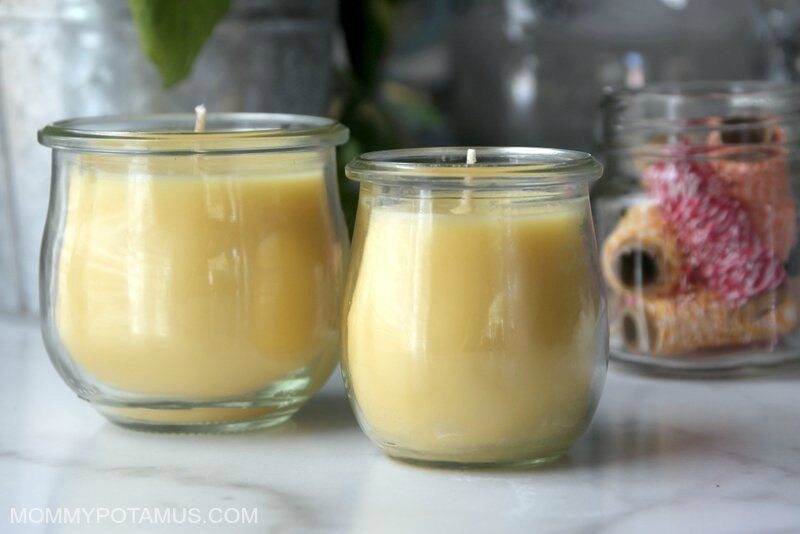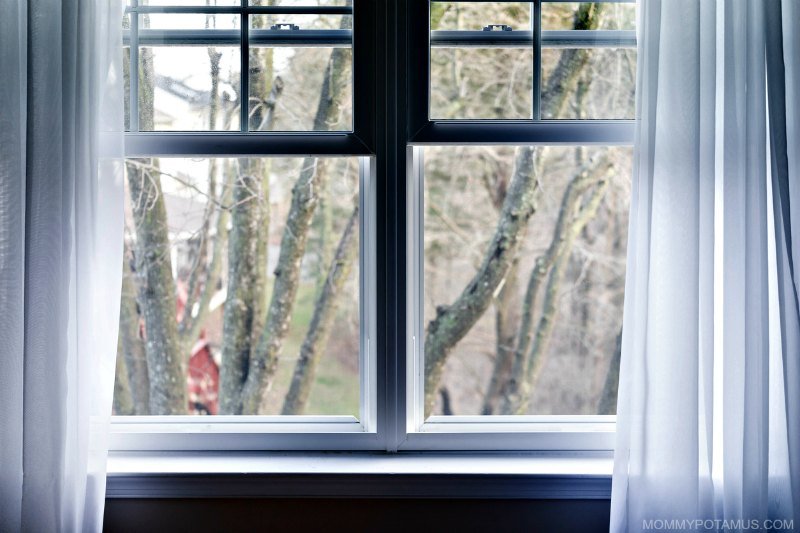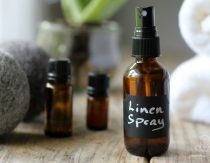
After 717 days of looking, my husband and I recently closed on a home. I can’t even describe how excited I am to organize my kitchen, hang my kids artwork, and set up my sauna, but it’s going to have to wait a little longer. Because although it’s awesome in so many ways (low EMF, no mold issues, and big kitchen window where I can grow herbs), it’s a newly constructed home that was built with conventional materials.
Many renovation and building materials – paint and new flooring, for example – release volatile organic compounds (VOCs), so I’m taking steps to reduce levels before we move in. According to this European Commission report, improving indoor air quality is “one of the most profitable investments society can make,” and I completely agree.
If you ask the parents in this school district I’ll bet they’d agree, too. After a gas leak, air filters were placed in every classroom, office and common room within a five mile radius. Testing showed that the leak had already dissipated by the time the filters were installed, which is why no one expected what happened next: test scores went up . . . a lot. (Interestingly, the air filter they used is the same one I have.) (1)
Understanding and addressing air quality issues can have a profound impact on health, so with that in mind this article will cover:
- Health effects of VOCs (and why not all VOCs are dangerous)
- Common sources of VOCs such as cleaning supplies, scented candles and construction materials
- How to reduce harmful VOCs in your home
- Why low and no-VOC paints can still contain harmful chemicals (and what to look for instead)
- Tips for maintaining indoor air quality after reducing VOCs

What are volatile organic compounds (VOCs)? ^
You know how “organic food” means natural and free of synthetic fertilizers, harmful pesticides, etc.? Yeah, that’s not at all what it means when we discuss organic compounds. Here’s how they’re defined:
- Organic compounds are generally any substance that contains carbon, which is the basis of organic life on earth.
- Volatile organic compounds are organic compounds that have a low boiling point. Because they boil at room temperature, they become gases and evaporate into the air easily.
VOCs can be natural or synthetic. For example:
- Plants create volatile organic compounds, which are responsible for the scent of freshly cut grass, roses, and pine. According to this article in Science Daily, “VOCs protect plants from stress, attract insects for pollination and seed dispersal, and even send warning signs to neighbor plants and animals that predators are attacking. VOCs essentially mediate relationships between plants and the organisms with which they interact.”
- People create VOCs, too, usually by turning hydrocarbons into petrochemicals. (Hydrocarbons are organic matter deposits that have undergone transformation from intense pressure and heat.)
Health Effects of Volatile Organic Compounds ^
The important thing to remember about VOCs is that the one thing they all have in common is their boiling point. Other than that, each VOC has its own properties and health effects, which may be positive or negative.
VOCs include a variety of chemicals, some of which may have short- and long-term adverse health effects.” Environmental Protection Agency (2)(emphasis mine)
In other words, not all VOCs are dangerous, and some are actually considered therapeutic. In one study, four volatile organic compounds (trans-anethole, estragole, eugenol and isoeugenol) that are constituents in essential oils such as anise, fennel, clove, basil and ylang ylang were found to actually counteract some of the negative effects of indoor air pollution. (3)
On the flipside, not all naturally occurring VOCs are safe – it really comes down to the actual compound. Think of it like this: Zinc is a metal that’s essential for the human immune system, but another metal – lead – is toxic and has no functional benefit whatsoever. Two metals, totally different impacts on the body.
That said, many of the VOCs found in our homes are air pollutants, and the most common source of exposure comes from synthetic sources. Some of the most common harmful ones are:
- Formaldehyde
- Toluene
- Benzene
- Acetone
- Carbon Tetrachloride
- Xylene
- Vinyl chloride
Short-term exposure to these chemicals has been linked to headaches, difficulty concentrating, irritability, brain fog, depression, dizziness, nausea, allergies, asthma, and irritated skin, eyes, nose, and throat. (4)
According to the EPA, long-term exposure is linked to liver, kidney and central nervous system damage, along with some types of cancer. (2)
According to the Minnesota Department of Health, “People with respiratory problems such as asthma, young children, the elderly and people with heightened sensitivity to chemicals may be more susceptible to irritation and illness from VOCs.” (5) People with an impaired ability to detoxify, such as those with MTHFR genetic mutations, may also be more likely to react to VOCs.
Sources of Volatile Organic Compounds ^
Here are some of the most common sources of VOCs in the home:
Building Materials:
- Paint and paint strippers
- Varnishes and finishes
- Glues and adhesives
- Carpet and other types of flooring
- Engineered wood products (particle board and plywood)
Home and Personal Care Products:
- Furniture
- Cleaning supplies and disinfectants
- Air fresheners and scented candles
- Perfume, nail polish remover and other personal care items
- Stored gasoline and automotive products
Other Sources:
- Dry-cleaned clothing
- Tobacco smoke
- Computers and office printers
- Moth repellents
What are SVOCs and how are they different? ^
The upside to VOCs (especially the beneficial ones) is that you can smell them when they’re present. Once an item has aired out and lost it’s odor, it’s a pretty good indicator that most of the VOCs have evaporated. However, there’s a another subtype of VOCs that are odorless and therefore more difficult to detect. (6)
Semi-volatile organic compounds (SVOCs) have a higher boiling point than VOCs and therefore don’t evaporate easily. However, they can escape from products on dust particles, and then settle on surfaces that increase our exposure. Because they’re heavier and don’t evaporate, SVOCs can accumulate over time. The best way to address this is to manually remove dust and opt for low-SVOC products when possible.
14 Ways To Reduce VOCs & SVOCs In Your Home ^
Of course, the best way to keep VOCs low in your indoor environment is to avoid or limit the use of products that contain them. Fortunately, even when they’re unavoidable, there are ways to reduce their impact on human health. Here are some of the best ways to do that:

1. Use Natural Cleaning Products
According to a new study, regular use of cleaning sprays can have as much of an impact on health as smoking a pack of cigarettes a day. Natural cleaning products are a much better option. Below are some of my favorite recipes, and here are my top recommendations for what to buy if you don’t want to DIY.
- Homemade Dishwasher Detergent
- DIY Natural Dishwasher Rinse Aid
- Citrus Infused Cleaning Vinegar
- How To Make Non-Toxic Granite Cleaner
- Streak-Free Homemade Window Cleaner
- DIY Vinegar + Hydrogen Peroxide All-Purpose Cleaner
- Homemade Scouring Powder
- DIY All-Purpose Cleaner With Lemon & Lavender
- Homemade Bleach Alternative
- Homemade Soft Scrub
- Natural Laundry Detergent
2. Sleep On A Non-Toxic Mattress
Your face is right next to the sleeping surface of your mattress for approximately 1/3 of the day, making it a significant source of potential exposure. Many mattresses offgas compounds like chlorinated tris – which is currently being used in increasing amounts due to PDBE’s being phased out. Chlorinated tris is a semi-volatile organic compound that was removed from children’s pajamas more than thirty years ago after it was found to cause cancer in test animals. (7) (8)
I love my non-toxic mattress and highly recommend it, and this company makes good options, too.
However, if a new mattress is not an option, you can wrap your current mattress in a low density polyethylene cover. It’s fairly inexpensive, and polyethylene is considered an inert plastic that does not contain phthalates or unsafe plasticizers. (9)
3. Opt for Solid Wood Furniture When Possible
Pressed-wood products like particle wood and plywood contain formaldehyde and other VOCs, so opt for solid-wood furniture with non-toxic finishes when possible.
4. Upcycle And Reuse Furniture
When solid wood furniture is not possible due to budget or availability constraints, another good option is to buy used furniture that has already off-gassed. If desired, refinish it with non-toxic paint.
5. “Bake” A New Home
The home my husband and I recently bought was not part of our original plan. Our Plan A was a home that had already off-gassed for a couple of years when we put an offer on it, and our Plan B was to build a home with non-toxic materials (which didn’t work out due to our budget). As I mentioned earlier, the home we bought is wonderful in so many ways, but it was built with conventional building materials that contain VOCs.
For that reason, I’m using this method to accelerate the off-gassing process. It’s called a “bake-out,” and it basically involves heating the house for five days (or more) to get it to release VOCs. During the heating period, windows are opened 2-3 times per day to prevent the VOCs from being reabsorbed.
During the last few days of the bake-out, I’m renting a commercial air scrubber to get the air as pristine as I can. I’ll be using an optional carbon filter that will specifically deal with VOCs.
6. Use A Quality Air Filter
Even though a “bake-out” will accelerate the off-gassing process, more VOCs and SVOCs will slowly be released over time. That’s why I invested in a good air purifier that will continue to clean the air as more stuff is released.
It has a medical-grade HEPA filter that helps with allergen particulates, and its activated carbon is infused with a special blend of potassium iodide for additional adsorption of VOC chemicals, including formaldehyde.

7. Avoid Conventional Scented Candles & Air Fresheners
Unlike paraffin candles – which release carcinogens like toluene and benzene into the air– beeswax candles burn clean and bright while releasing a faint honey scent. This candle is handmade with 100% beeswax and will burn for up to 45 hours, and you can make beeswax candles, too. (It’s easy!)
For scent, I use diffused essential oils and homemade air freshener instead of conventional options.
8. Choose Non-Toxic Paint & Building Materials (Low-VOC Doesn’t Mean Toxin-Free)
Unfortunately, low-VOC and no-VOC paints are often misleadingly labeled. When it created its definition of VOCs, the Environmental Protection Agency specifically focused on compounds that create smog when mixed with nitrogen oxides and sunlight. Some VOCs, which have negative impacts on human health but don’t contribute to smog, are therefore exempt from classification as a VOC by the EPA.
To make matters even more confusing, many manufacturers of low or zero VOC paint have just replaced VOCs with SVOCs, which take much longer to offgas. With that in mind, I recommend asking manufacturers about the presence of exempt VOCs and SVOCs in their formulas. Based on my research, my top choice for non-toxic paint is AFM Safecoat. I’ll add more options as I find them.
For building materials, there are sometimes issues of misleading labeling similar to paint, but this is a good place to start.
9. Air Out New Furniture & Household Items Before Bringing Them Inside
If non-toxic materials are not available (or not in your budget), let new carpet or other materials offgas outside before bringing them indoors.

10. Open Your Windows
According to the Consumer Product Safety Commission, a house that is well-sealed for energy efficiency “may have higher pollutant levels than other homes.”
If too little outdoor air enters a home, pollutants can accumulate to levels that can pose health and comfort problems. Unless they are built with special mechanical means of ventilation, homes that are designed and constructed to minimize the amount of outdoor air that can ‘leak’ into and out of the home may have higher pollutant levels than other homes.” (Consumer Product Safety Commission)
Fortunately, one inexpensive way to improve indoor air quality is open up the windows as often as possible. If there isn’t much wind outside, make sure to turn on fans to circulate the indoor/outdoor air better.
Also, keep in mind that if you’re sensitive to pollen it would be a good idea to wait until pollen counts are low. If you live in a high-humidity area you will want to run a dehumidifier after you close the windows, too. (This inhibits mold, which can negatively impact indoor air quality.)
11. Take Advantage of Warmer Months
Try to plan painting and renovations for warmer months so you can open the windows frequently and air out your home.
12. Use a Dehumidifier
When my husband and I were house hunting, we had a mold remediation specialist evaluate a house we were considering. We opted not to buy that house due to mold concerns, but we learned a lot about preventing it in the process. One takeaway was the importance of using dehumidifiers in our area, which is near the ocean. (Translation: Super humid.)
As I continued to research, I also discovered that high levels of humidity increase the rate of VOC off-gassing while reducing the ability of carbon filters to clean the air. (10)
I’m currently researching dehumidifiers and will be purchasing one this week.
13. Avoid Flame Retardants
Although legislation no longer requires the use of chemical flame retardants in furniture, many couches and other pieces of furniture are still manufactured with SVOC-containing flame retardants. I’m currently researching safer sofa and furniture options and will share my findings soon. 🙂
14. Don’t Feed The Dust Bunnies
Another weird thing I learned from the mold remediator is that mold feeds on dust – who knew? Dust is also a source of SVOCs, so I’ve been paying a lot more attention to my cleaning routine lately.
One of the items on my wish list is a HEPA vacuum. Unlike regular vacuums that recirculate dust into the air, HEPA vacuum cleaners capture the small particles that SVOCs attach themselves to.
More Ideas for Improving Indoor Air Quality ^
Of course, we haven’t even talked about the benefits of houseplants or using a doormat yet. Check out this post to get more tips for improving indoor air quality naturally.
Also, if you have a tip for reducing VOCs in the home, please tell me about it in the comments!
Source.
1. AustinAir (2016) A Special “Thank You” To Our Dealers
2. Environmental Protection Agency. Indoor Air Quality (IAQ)
3. Kfoury, Miriana et. al. (2016) Essential Oil Components Reduce Pulmonary And Hepatic Cells Inflammation Induced By Air Pollution Particulate Matter
4. Sumedha, Joshi (2008) The Sick Building Syndrome.
5. MInnesota Department of Health. Volatile Organic Compounds In Your Home.
6. Toxicological Risks of Selected Flame-Retardant Chemicals. Tris (1,3-dichloropropyl-2) Phosphate
7. Berkely Lab. Indoor Air Quality Scientific Findings
8. Haberman, Clyde (2015) A Flame Retardant That Came With Its Own Threat To Health
9. International Journal of Toxicology. Final Report On The Safety Assessment of Polyethelyne.
10. Markowicz, Pawel and Larrson, Lennart. Influence of Relative Humidity on VOC Concentrations in Indoor Air





While you’re looking into things I absolutely LOVE my Miele vacuum! Check them out their filters are great and I love the ability to adjust the suction based on what I’m vacuuming or if my 1 year old wants to use the vacuum ha!
I’d add laundry detergent as one of the biggest modern assaults on air quality. Some of the modern scent chemicals are so strong that if one person in the room has used a heavily scented detergent, it makes the entire room smell — and as the scent chemicals float around the room and land on others who are in there, it sticks to their clothing. They take the clothing home, wash it, and the scent chemicals transfer to everything in that load of laundry. As a result, everyone who was in that original room will now smell like the person who used that heavily scented detergent, possibly forever if they don’t figure out some concoction that gets the smell out.
If you are around these scent chemicals a lot, your nose becomes accustomed to the smell and when it sticks on you, you smell it all the time and stop noticing it. I notice it because I have a severe allergy to these chemicals and have figured out how to get the chemicals out of my family’s clothing, at least most of the time. My home smells like nothing, so the contrast between here and most public places is great and therefore, very noticeable.
My daughter’s entire school smells like laundry detergent. I can hardly go in at all and when I pick her up from school, some days the smell is so strong on her that I can hardly bear to be in the car with her. It would be better if these sticky scent chemicals were illegal.
Thanks, Heather, for a great article.
Help. We have the same problem. My partner comes home from teaching at the University and reeks of fabric softeners. How do you remove these from your daughter’s clothing? Our entire neighborhood smells like toxic fabric softeners everyday. We can barely go outside without getting sick. And yes, this should be illegal! We are so over it but just have to educate one at a time. Thanks for any information.
Hi John.
I’m going to answer you in 2 parts, because the comment system won’t let me write everything in one go.
In my experience, it’s probably not even the fabric softeners anymore, but the laundry detergent itself — Tide and Gain are by far the worst offenders, as they use scent chemicals that will stick to everything!
I feel for you. My neighborhood smells the same and it is absolutely horrible. There are some cities that have created bylaws about dryer emissions. I don’t recall offhand where they are, but it might be worth looking into.
I’ve been doing research about scent chemicals because, like you, I am so over it. I’m setting out to go to battle about this. I’m not sure where you live, but you might be interested to know that most Canadian universities that have scent free policies. I’m not sure if any American ones do, but it might be time to get that going. If you want any links to their policies, let me know.
wait for part 2 …
Part 2:
And actually, I am going to have to do this in 3 parts.
To get the scent chemicals out? This is going to be long, so have a seat.
To start, I usually put things in a bucket of bowl, depending on how much clothing I am soaking and add some OdorKlenz Laundry Powder. For darks, I usually put in no more than 1 scoop for a fairly large bucket. It can take the color out of some clothing (like jeans) if you use too much, but sometimes it’s worth the risk of adding more if the clothing would be ruined anyway if you don’t get the smell out. For light colors, I usually put it 2 scoops. For really stubborn smells, I’ve sometimes put in about 1/4 cup or more. Usually, I soak the clothes for about 24 hours and then rinse them out.
After soaking, I wash the clothing in this concoction:
Ecomax unscented laundry detergent — It’s pretty natural, but probably any unscented detergent would do.
Natural Factors tea tree oil — I’ve never measured it, but for a full load, I probably use about 1/4 to 1/2 teaspoon. This is the best brand I’ve used — I’ve tried others and have discovered that they are not all created equal, as some just don’t do the job as well.
Borax — This can also take color out of darks, so it’s worth being careful. I just dump it in so I’m not sure how much I use, but it’s probably about 1/8 cup for darks and 1/4 cup for lights.
Washing soda — Same instructions as borax. It seems Arm and Hammer may have added scent to their product, so if you can find another brand it’s probably safer. You can also make your own out of baking soda if you want to be really sure of what’s in it. Heather has great instructions for this: https://mommypotamus.com/how-to-make-washing-soda/
Ecomax dish soap — I add a squirt or two. Again, probably any unscented detergent would do.
wait for part 3 …
Part 3:
And oh my goodness, there has to be a part 4!
You can mix all the ingredients together first if you want to, which would probably distribute it more evenly and avoid a really strong concentration of tea tree oil smell on the garment it lands on. The smell of the oil does fade, so I don’t bother with mixing and just dump it in. It’s also worth noting that whatever the oil lands on will sometimes get some marks on it, but I usually don’t have trouble with it. If it does leave an oily mark, I’ve just stuck it in the wash again and have never had trouble getting it out.
If all of that stuff leaves a white film on your clothing or leaves them feeling kind of stiff, they probably just didn’t rinse well enough.
Usually, I soak with the OdorKlenz and then wash; occasionally, I skip the soaking and just go straight to the wash.
Part 4: I’ve learned that the scent chemicals spread quite readily, so if you have something that has scent on it, don’t wash it with other laundry. I’ve also discovered, the hard way, that the different scents you pick up in different places have different levels of stickiness, so I usually wash things grouped by where they have been. Otherwise, a scent that might have come out if I had washed something on its own gets a new, more stubborn scent stuck on it. It’s a bit of a nightmare.
Usually, this process works, although for really stubborn scents, it might take a few rounds of washing. If things have actually been washed in scented detergent, the scent may never come out. I’ve had a lot more luck with getting things out of cotton; the scent seems to bind a lot more to synthetics. The hotter the water, the better it works.
If all that doesn’t work, ammonia might. It’s pretty toxic stuff, but if I’m desperate, I try it. If you’re okay with using it, you might even give this a go before using all the other things, as it’s quite a bit cheaper. I don’t measure this either, but I’m guessing that I probably put about 1/4 cup in a full load. You have to be careful with synthetics, as not all of them react well to ammonia — never use it with fleece, as it will make it gummy. I have used it successfully with a lot of synthetics, but it can be a bit unpredictable. I found it surprisingly hard to find ammonia that doesn’t have any scent added to it. Home Hardware has one that is just plain ammonia.
Good luck!
Hi!
I am amazed at the amount of research that goes into all of your articles- thank you. My question is this: for those of us who can’t afford to spend thousands of dollars on air purification systems, can you recommend a solid choice for a room-sized air purifier in the $100 range? Thank you!
Hi Heather,
Congratulations on your new home and thanks so much for sharing your tips! We moved into a new construction house 2 years ago and I was paranoid about all the smells too! Thankfully we live in SC by the ocean, so I could have the windows open most of the year and when we didn’t have them open I had air purifiers going! My question is, where do you buy houseplants? I assume plants from Lowes/Home Depot are probably sprayed with stuff, so is there an on-line place you buy organic plants from or ones not sprayed? Also, your lashes are so long and pretty, are you putting castor oil on them, I have been meaning to try that! Thanks so much!
The kitchen looks lovely. Congratulations for the house, I wish you and your family many happy days in it.
If I don’t come across too nosey, what state is this in?
We live in Florida 🙂
Have you heard anything about ozone treatments for expediting the breakdown of VOC’s ? I’ve read it can help and am considering having my house treated when we finish construction.
Can you share your tips for finding a low emf/ mold free home? Thanks! Congratulations on the new home. I recently discovered your blog and am so thankful that I did! Thanks for being a healthy living mom enthusiast!
When I first started house shopping I rented EMF meters to use for a couple of weeks. When our couple of weeks of looking turned into two years, I found it was more cost effective to buy my own. (Plus, I use them to test products with low-EMF claims). For mold, I sent air samples to a lab to conduct an ERMI and HERTSMI analysis.
What’s your best formula for removing some kind of VOC that was left over after I had a new ceramic tile floor installed please? It may be from the incorrect use of a grout sealer or from a worker that was working across the floor with his old paint pants on (paint thinner?). Whatver it is, you cannot smell it, and it transfers to other items like mad. Once it got into my clothes dryer, nothing would get it out, and it polluted half my wardrobe and all of my linens before I figured out what was going on (I washed and dried an old towel used by the worker to protect his knees while he skidded around the floor). I have never been so affected by anything in my lifetime. Whatever it is, IT’S BAD and IT’S VOLATILE.
Others have recommended trying:
1. Cheap vodka
2. TSP
3. Hydrogen peroxide + Borax + Dish Soap
I have tried with zero effect:
1. Dawn
2. Baking soda
3. Cat litter (Oil Dri)
4. White vinegar
The windows have had fans blowing for 6 months, and still no relief. If I am in that room (it’s an attached mother-in-law quarters) for just two minutes without a 3M organic cartridge face mask, I get a delayed reaction (about 10 minutes), and the upper respiratory pain lasts a day. Geesh!
Appreciate your advice. If more than one of the things I listed might work, please let me know the order in which you would try them.
I am so sorry. A mystery indeed. Call Joel Hirschberg (owner) at green buildingsupply.com He may be able to advise what this could be and the remedy for getting rid of it, barring having to remove the darn floor and starting over with true safe eco-friendly materials. Did they use muriatic acid to remove the dried grout after installing floor? They did in our new home, and as a result, I nearly died. Still recovering 10 years later. If you cannot get rid of this VOC, you have to get rid of that floor and start over and be adamant about workers using the non-toxic materials that you provide. You cannot keep exposing yourself to these VOCS because you can get very ill. I have a very bad stage of MCS due to the negligence of workers using chemicals in our new home. Not worth it. I feel for you. We used non toxic grout, etc. from green building supply. Call Joel. 1-888-727-2101. Tell him your story. I am sure he will help you. They only sell non-toxic and eco friendly building materials. My best to you.
Thank you for this article, Heather! Learned a lot of new things. Will def be renting an air scrubber when we move into new house. Never knew about that!
Can anyone recommend a good humidifier?
Essential oils are VOCs, so what makes them okay to use on a daily basis? This is not an attack on your information, I’m just honestly trying to figure out if I want to keep using essential oils at all – like in anything. Research has shown that when diffused, they release harmful VOCs like ethanol, methanol, terpene, linalool, and limonene, so I won’t be diffusing them at all. However, I don’t see any research on using them in homemade products like lotions, body butters, cleaners, etc. Do you have any information on this?
VOC stands for Volatile Oil Compound, which simply describes oils that evaporate quickly. Not all VOCs are considered harmful. It’s a little like minerals: some (magnesium, for example) are beneficial while others (say, arsenic) are toxic.
Anything with fragrance regardless of whether or not it is “natural” can be an irritant to skin and can damage skin deep down. Paula’s Choice website has articles about the dangers of fragrances in skincare products, including “essential oils” and she lists research articles